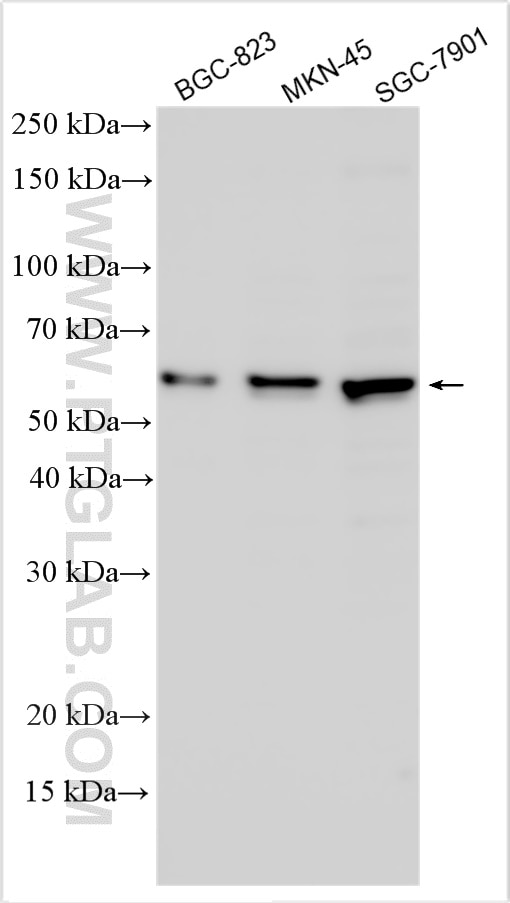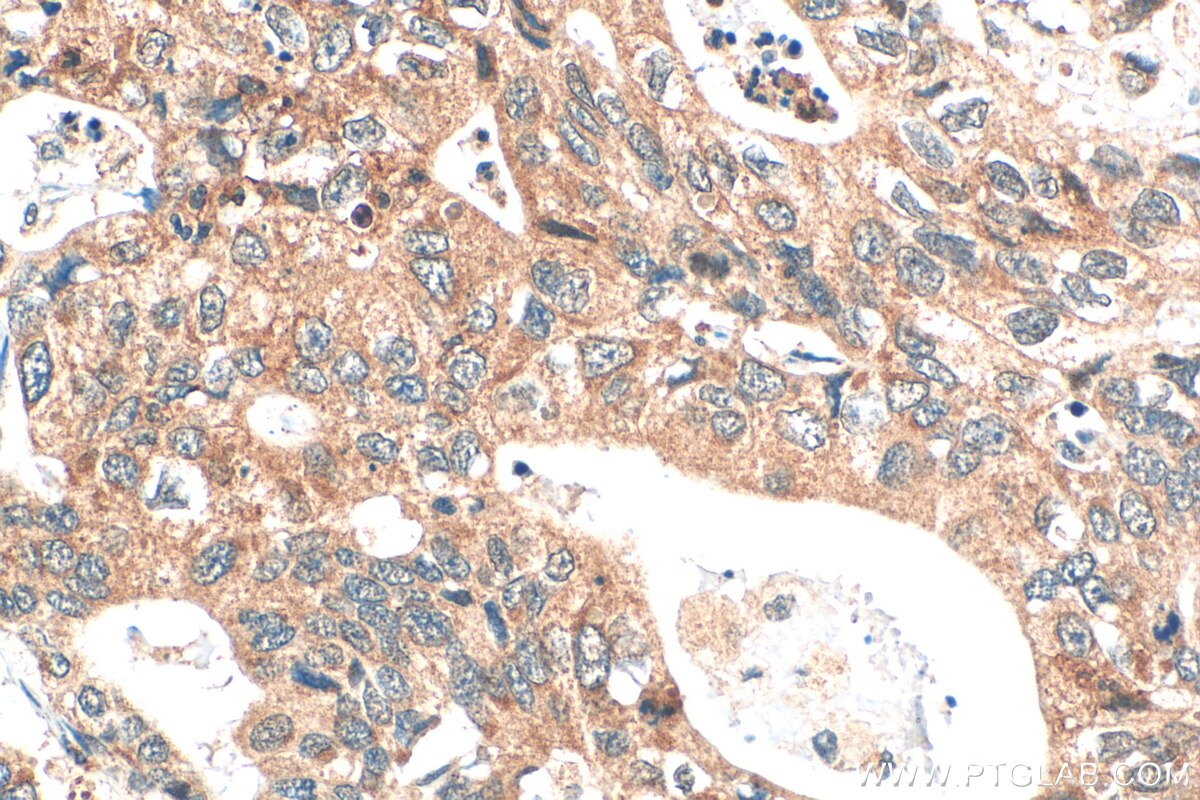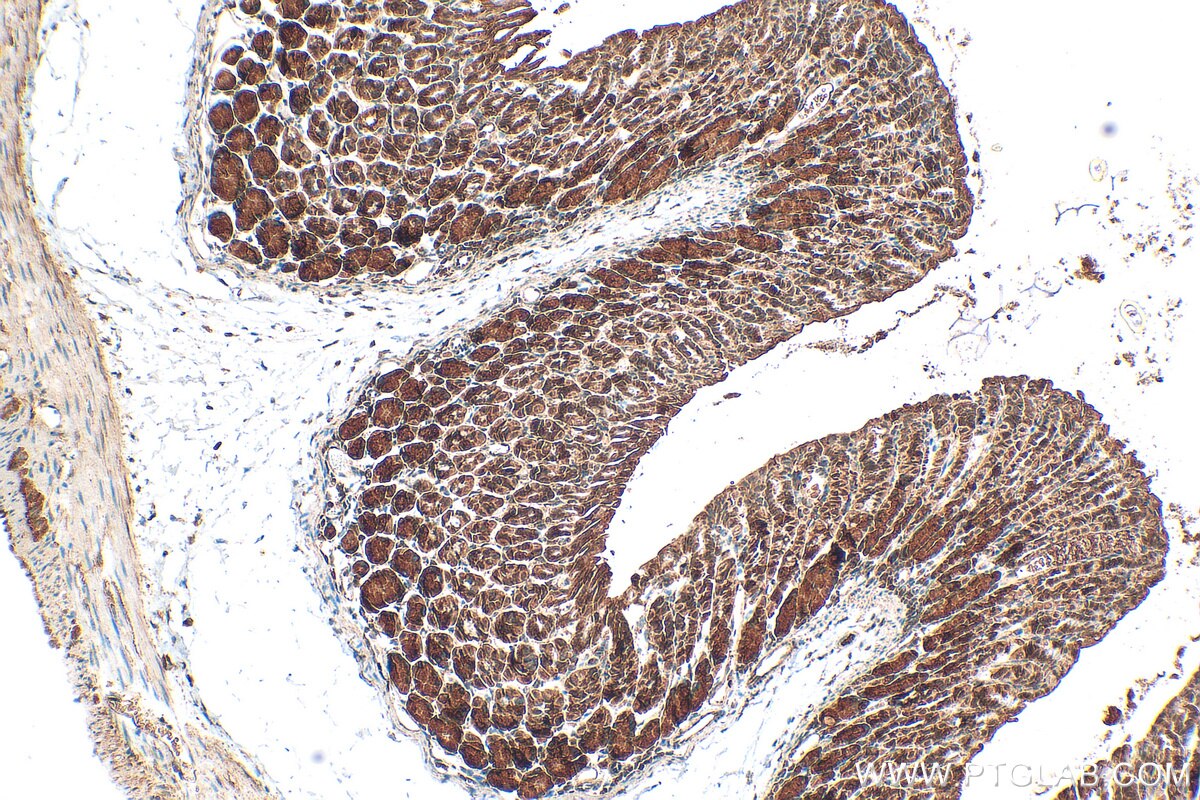Tested Applications
| Positive WB detected in | BGC-823 cells, MKN-45 cells, SGC-7901 cells |
| Positive IHC detected in | human stomach cancer tissue, mouse stomach tissue Note: suggested antigen retrieval with TE buffer pH 9.0; (*) Alternatively, antigen retrieval may be performed with citrate buffer pH 6.0 |
Recommended dilution
| Application | Dilution |
|---|---|
| Western Blot (WB) | WB : 1:1000-1:6000 |
| Immunohistochemistry (IHC) | IHC : 1:50-1:500 |
| It is recommended that this reagent should be titrated in each testing system to obtain optimal results. | |
| Sample-dependent, Check data in validation data gallery. | |
Product Information
31420-1-AP targets DPCR1 in WB, IHC, ELISA applications and shows reactivity with human, mouse samples.
| Tested Reactivity | human, mouse |
| Host / Isotype | Rabbit / IgG |
| Class | Polyclonal |
| Type | Antibody |
| Immunogen | DPCR1 fusion protein Ag33318 Predict reactive species |
| Full Name | diffuse panbronchiolitis critical region 1 |
| Calculated Molecular Weight | 56 kDa |
| Observed Molecular Weight | 56 kDa |
| GenBank Accession Number | NM_080870 |
| Gene Symbol | DPCR1 |
| Gene ID (NCBI) | 135656 |
| RRID | AB_3669973 |
| Conjugate | Unconjugated |
| Form | Liquid |
| Purification Method | Antigen affinity Purification |
| UNIPROT ID | Q3MIW9 |
| Storage Buffer | PBS with 0.02% sodium azide and 50% glycerol , pH 7.3 |
| Storage Conditions | Store at -20°C. Stable for one year after shipment. Aliquoting is unnecessary for -20oC storage. 20ul sizes contain 0.1% BSA. |
Background Information
Diffuse panbronchiolitis critical region 1 (DPCR1) is located in the major histocompatibility complex (MHC) class I. DPCR1 is downregulated in invasive pituitary adenoma compared with that in non-invasive tumors, but upregulated in the precursor of gastric carcinogenesis (PMID: 29242154).
Protocols
| Product Specific Protocols | |
|---|---|
| WB protocol for DPCR1 antibody 31420-1-AP | Download protocol |
| IHC protocol for DPCR1 antibody 31420-1-AP | Download protocol |
| Standard Protocols | |
|---|---|
| Click here to view our Standard Protocols |







